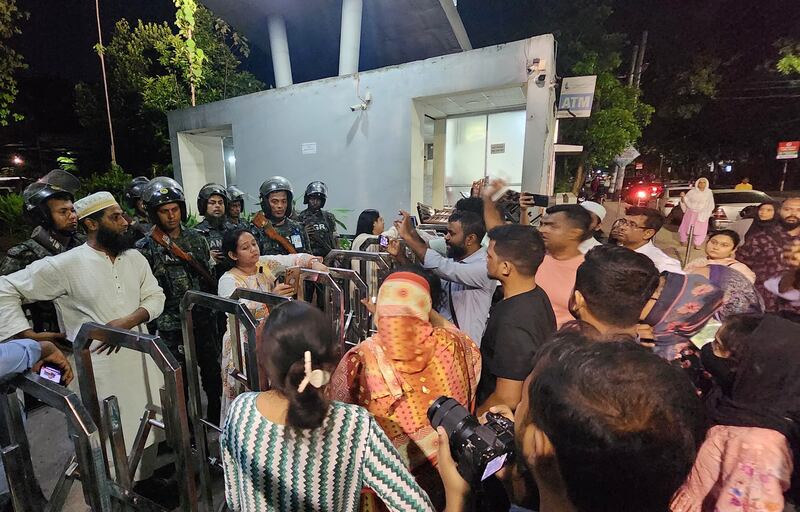A new Bangladesh inquiry commission said Thursday it had found an infamous “secret” detention center at the military intelligence headquarters that people released from its 22 cells had chillingly talked about.
The detention center operated during the administrations of ousted ex-Prime Minister Sheikh Hasina, and was run from the Dhaka headquarters of the Directorate General of Forces Intelligence (DGFI), which has no legal power to detain anyone, commission member Sazzad Hossain said.
“We found similarities with the victims’ description during the [Sept. 25] visit,” Sazzad told a press conference in the Bangladeshi capital.
“Some changes were made, many pieces of evidence were destroyed and they had especially erased [prisoners’] writings on the wall by painting over them.”
The Commission on Enforced Disappearances was formed in August after Hasina resigned as PM and fled the country, to collect information and details surrounding incidents of enforced disappearance during her administrations, which had ruled Bangladesh uninterrupted since 2009.
Some among the hundreds who had disappeared were freed from captivity after Hasina resigned on Aug. 5. They described how they had been held for very long periods in dark and dank cells, where thick walls kept out all sound.
Security officials nicknamed this center with its pitch-black cells as “Aynaghor,” which means House of Mirrors, said a Deutsche-Welle documentary that had alleged they existed. After that, it was known as “Aynaghor” in common parlance.

The mass movement that led Hasina to quit was seen as an indictment of her nearly 15 consecutive years as prime minister. During her time in power, she crushed dissent, had state institutions do her bidding, and stubborn critics of her rule vanished or were snatched away as presumed victims of enforced disappearances.
According to rights organization Odhikar, at least 708 people were victims of enforced disappearance between 2009 and June 2024.
For years, a range of domestic and international human rights groups, including organizations under the United Nations, had been raising deep concerns about allegations regarding enforced disappearances and the lack of judicial safeguards.
The commission on enforced disappearance, which was announced on Aug. 27 and operational since mid-September, lodged hundreds of enforced disappearance cases in a little under two weeks of its formation, said its president, Moyeenul Islam Chowdhury, who called the press conference on Thursday.
“We have received a total of 400 complaints in 13 working days between Sept. 15 and Oct. 2,” he said.
“We have already recorded statements of 75 people, including victims and victims’ families,” he said, referring also to some victims who had disappeared but returned.

Most of them said they had been picked up by the Rapid Action Battalion (RAB), Dhaka Metropolitan Police’s Detective Branch (DB) and Counter Terrorism and Transnational Crime (CTTC), Moyeneel said.
“All abductions were not enforced disappearances but all enforced disappearances were abductions,” he said.
Among the 75 people whose statements they recorded were an opposition politician and a suspended military general, who had been missing but returned.
“There are three types of victims. Those who returned after disappearing for days to years, some still missing and some sent to jail after several months of disappearance,” said another commission member, Nur Khan Liton, who is a human rights activist.
The commission did not say how many of the 400 complaints received were from victims who had returned.
“We are now getting some complaints from victims and their families who earlier did not make any contact with any rights group. So we think the number of enforced disappearance victims may be more,” than some rights organizations had gathered data on, he said.
The commission’s Oct. 10 deadline to submit its reports will likely be extended, the commission’s president said.
Additionally, he said the commission would recommend that the interim government amend the penal code, which has no provision for enforced disappearances.
When BenarNews contacted it with questions on Thursday about the now-empty detention center, the military’s Inter-Services Public Relations office declined comment.
